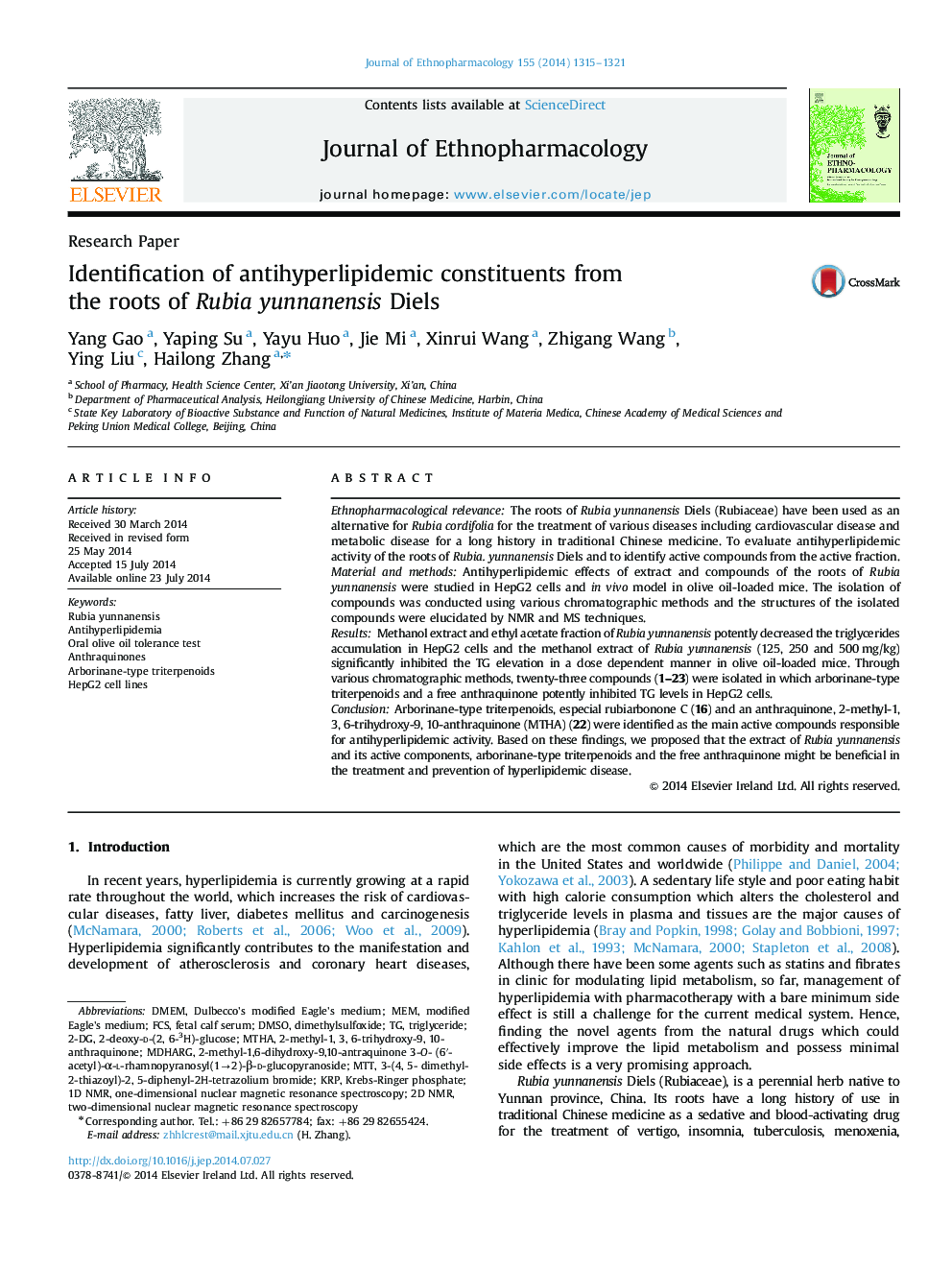| Article ID | Journal | Published Year | Pages | File Type |
|---|---|---|---|---|
| 5836139 | Journal of Ethnopharmacology | 2014 | 7 Pages |
Ethnopharmacological relevanceThe roots of Rubia yunnanensis Diels (Rubiaceae) have been used as an alternative for Rubia cordifolia for the treatment of various diseases including cardiovascular disease and metabolic disease for a long history in traditional Chinese medicine. To evaluate antihyperlipidemic activity of the roots of Rubia. yunnanensis Diels and to identify active compounds from the active fraction.Material and methodsAntihyperlipidemic effects of extract and compounds of the roots of Rubia yunnanensis were studied in HepG2 cells and in vivo model in olive oil-loaded mice. The isolation of compounds was conducted using various chromatographic methods and the structures of the isolated compounds were elucidated by NMR and MS techniques.ResultsMethanol extract and ethyl acetate fraction of Rubia yunnanensis potently decreased the triglycerides accumulation in HepG2 cells and the methanol extract of Rubia yunnanensis (125, 250 and 500Â mg/kg) significantly inhibited the TG elevation in a dose dependent manner in olive oil-loaded mice. Through various chromatographic methods, twenty-three compounds (1-23) were isolated in which arborinane-type triterpenoids and a free anthraquinone potently inhibited TG levels in HepG2 cells.ConclusionArborinane-type triterpenoids, especial rubiarbonone C (16) and an anthraquinone, 2-methyl-1, 3, 6-trihydroxy-9, 10-anthraquinone (MTHA) (22) were identified as the main active compounds responsible for antihyperlipidemic activity. Based on these findings, we proposed that the extract of Rubia yunnanensis and its active components, arborinane-type triterpenoids and the free anthraquinone might be beneficial in the treatment and prevention of hyperlipidemic disease.
Graphical abstractDownload high-res image (248KB)Download full-size image
